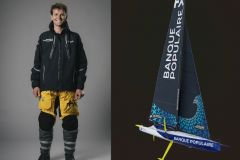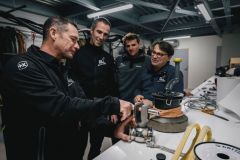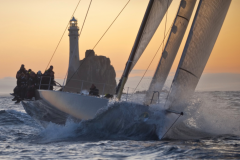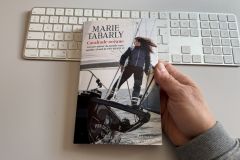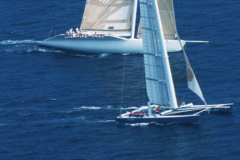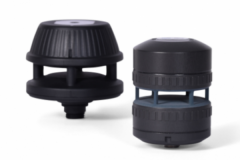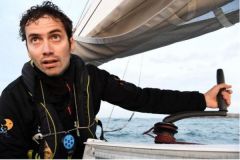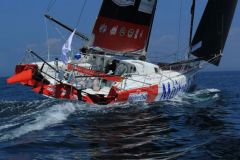Summer conditions off Lorient
Getting an IMOCA out of a port is no mean feat, even when it's one of the most popular, namely Lorient La Base. These yachts, designed for the Vendée Globe and other major ocean races, require a bit of upstream logistics for equipment and dockside assistance for departure and arrival. There aren't that many outings, and even fewer opportunities for non-team members. They are therefore planned in advance, but only if the weather cooperates. After a cancelled sail prior to the Route du Rhum due to calms, Swiss skipper Alan Roura once again made an appointment to accompany him on Hublot in the late spring of 2023. And this time, the weather was just right, with a steady onshore wind and flat seas.
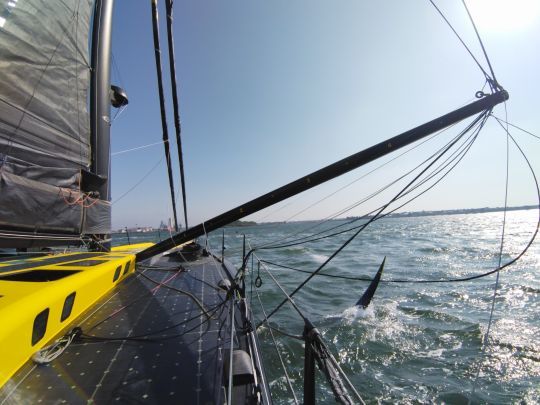
A cockpit designed for solo sailors
We cast off from Lorient and quickly hoist the mainsail into the harbor. With 6 people on board, we quickly realize that the IMOCA, initially designed by Alex Thomson with the Vendée Globe as his sole objective, was not designed for such a large crew. Her famous closed cockpit, at the foot of the mast, hardly accommodates more than 2 people. Fortunately, the weather's fine, and we leave Alan, his co-skipper Simon Koster and their technical team, toiling away on the coffee grinder, hoisting and unfurling...
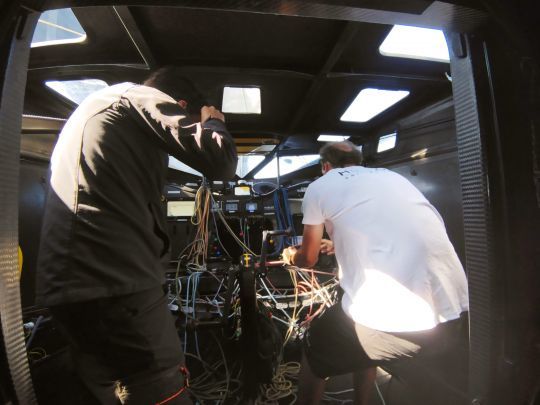
A long downwind flight
With the potential of such a boat and more than 20 knots of established wind, even though we left the pontoon at around 10 a.m. and are expected to be back for lunch, the water surface we'll be sailing on isn't that of the average sailor on his cruiser. The first objective is Belle-Ile. The sailors take the opportunity to test a foil profile, recently modified on the port side. Alan takes the helm outside, and the boat gets underway quickly, as soon as the sheets are sheeted in. With a reef in the mainsail and a J2 on the bow, and just over 20 knots of wind, the speedometer starts to climb. We're flying along at around 25 knots.
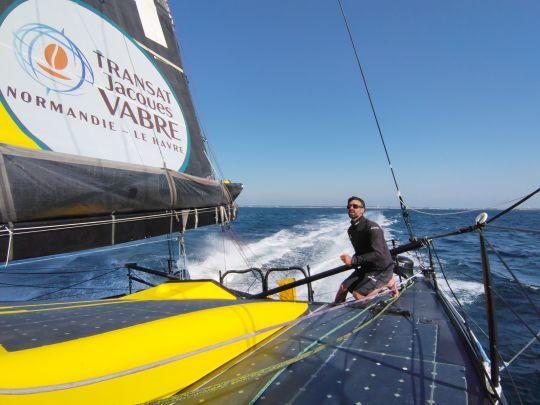
A strange experience as a helmsman
Alan offers me the helm. Positioned on the outside, the boat's secondary helm station is seldom used in its usual configuration, the skipper preferring the inside cockpit for manoeuvres and all the boat's electronic instruments. So it's with no heading or speed data, and no visibility of my penons, that I take the helm, a little intimidated. Acceleration is rapid. The boat takes off, and I realize how necessary it is to regulate the boat at the helm. A foiler is far from going straight, and you can imagine how hard the autopilots have to work, and how fine they are.
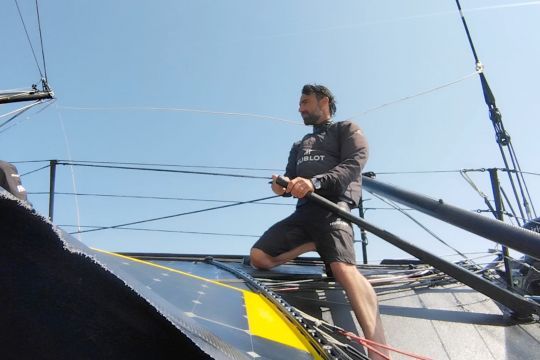
Without any tools, the boat's trim is used as an indicator. The adrenalin's pumping, and in spite of a few off-course excursions, wet for the crew when the windward foil sticks in the water, I reach the 29-knot mark.

Time to gybe and tack towards Groix to compare performance with the other foiler. This is followed by a series of close-hauled tacks, more difficult for this foiler, which is very well suited to downwind sailing, before reaching the port of Lorient.
Thanks to Alan and his team for this rich, sunny experience.





